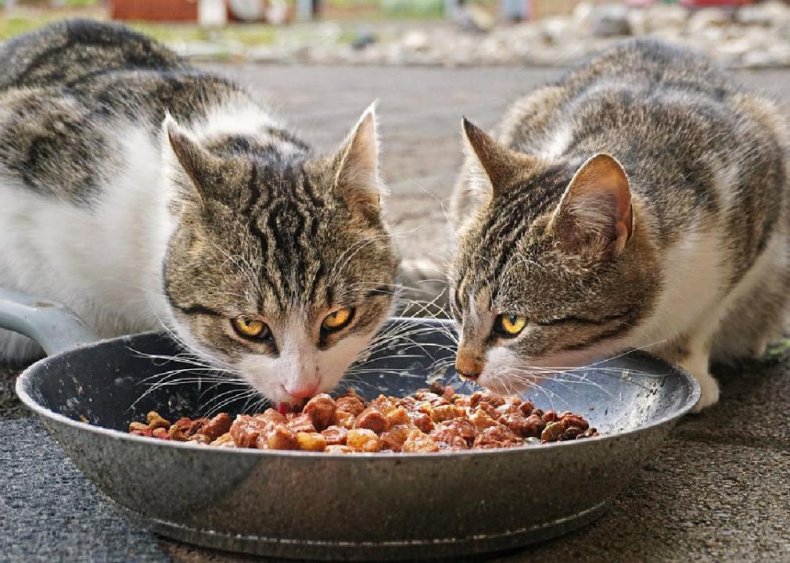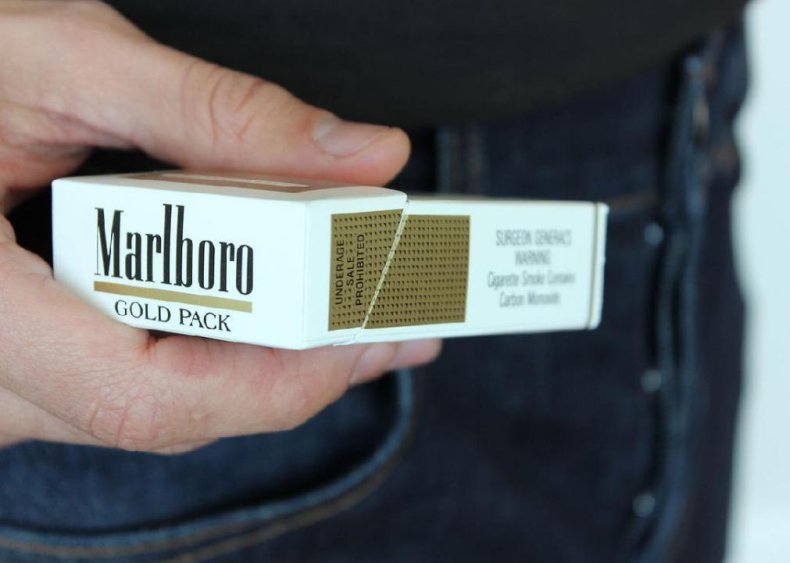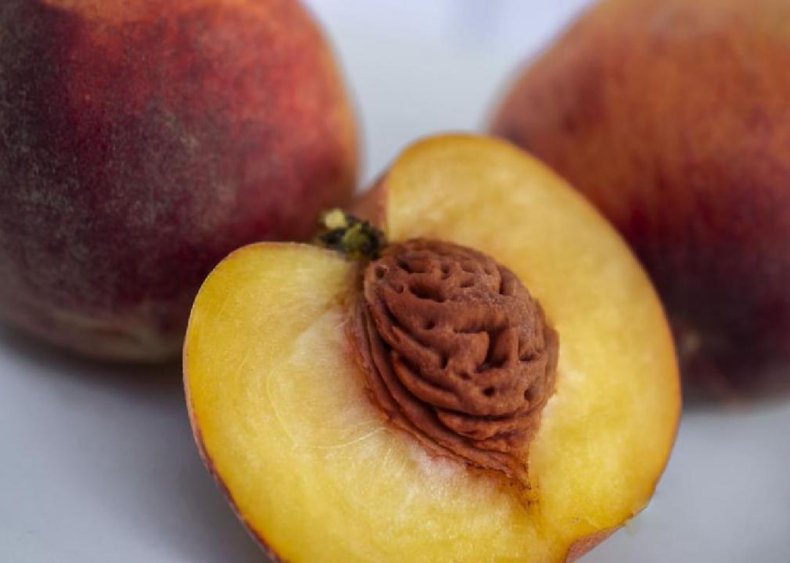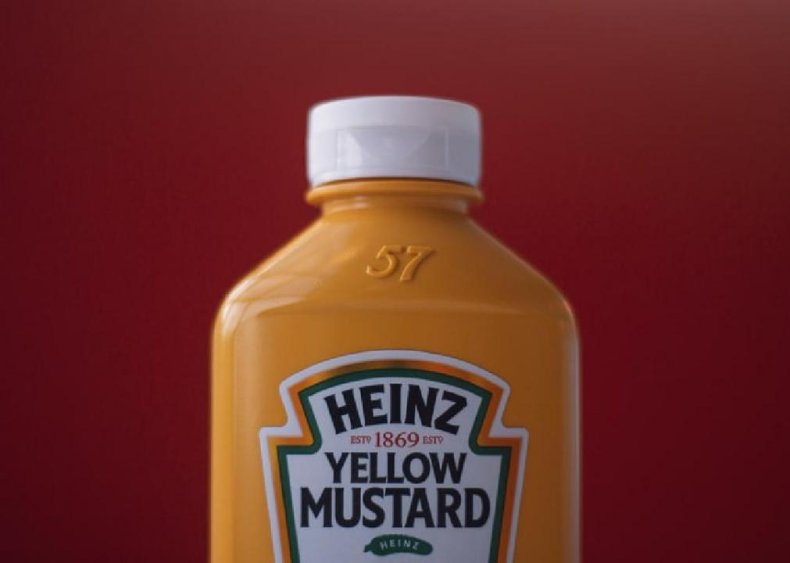30 Foods That Are Poisonous to Dogs
As man’s best friend, dogs do everything with us: walk around town, ride in the car, play in the yard, and snuggle on the couch. It’s natural, then, given how much time we spend with our four-legged companions, to assume they can eat with us, too. However, human food can be dangerous for dogs, even types of food that are completely safe for us.
Part of the reason we can eat foods that they can’t is that dogs are so much smaller than us. They also weigh far less, which means their bodies can’t absorb things as quickly. “Foods that are perfectly suitable for human consumption, as well as other animals, may be toxic and even poisonous to your dog, posing a serious threat to their health and well-being,” Michelle Schenker writes for Canine Journal. “Why? Because all animals have very different rates of metabolism.” Another problem is that dogs have voracious appetites and don’t always know when to stop. Although some foods are not toxic in small doses, larger quantities can be fatal.

Signs of food poisoning in dogs can vary widely but key symptoms include things like vomiting, diarrhea, dilated pupils, loss of appetite, restlessness, staggering, and disorientation. If you suspect your dog has eaten something toxic, VetsNow recommends never induce vomiting unless a poison control expert has instructed you to do so. Certain substances can actually cause more damage coming back up and are best left in a dog’s stomach. To prepare yourself for a potential incident, always keep your vet’s phone number handy, along with an after-hours clinic you can call in an emergency. The ASPCA Animal Poison Control Center also has a hotline you can call at (888) 426-4435 for advice.
Even with all of these resources, however, the best cure for food poisoning is preventing it in the first place. To give you an idea of what human foods can be dangerous, Stacker has put together a slideshow of 30 common foods to avoid. Take a look to see if there are any that surprise you.
You may also like: Most popular house-friendly dogs

Garlic
Garlic is an allium, a family of foods that can be fatal to dogs due to a compound called thiosulfate that damages red blood cells. It takes a lot of garlic to cause toxicity but some breeds, particularly Japanese ones (such as akitas and shiba inus), are particularly susceptible. “Signs of garlic poisoning can be delayed and not apparent for several days,” explains the Pet Poison Helpline. “While tiny amounts of these foods in some pets, especially dogs, may be safe, large amounts can be very toxic.”

Avocado
Avocados are dangerous to many animals, not only dogs, partly due to a fungicidal toxin called persin. They are only dangerous to dogs in large quantities; however, veterinarians recommend keeping them away due to the large pits, too, which can get lodged in their throats. The high fat content is also dangerous because it can inflame their pancreas. “Exactly what amount of persin is lethal isn’t known, but in large amounts, it can cause vomiting and diarrhea, myocardial damage, and its high fat content can lead to pancreatitis,” the American Kennel Club (AKC) explains.

Yeast
Eating unbaked bread dough can be extremely dangerous for your dog because the fermenting yeast gets rapidly absorbed in the bloodstream, where it produces enough ethanol to cause alcohol poisoning. Additionally, yeast dough can rise as it moves through the digestive system, potentially twisting the stomach—a situation that can lead to death. Even if the yeast doesn’t cause a life-threatening emergency, it can severely bloat your pup’s stomach, causing intense pain and discomfort.

Chocolate
Chocolate is one of the most commonly recognized toxins for dogs. The culprit is theobromine, an alkaloid that can cause cardiac arrhythmias and central nervous system dysfunction in dogs. Dark chocolate, semisweet chocolate, and unsweetened baker’s chocolates are the most dangerous, while milk and white chocolates have smaller amounts (though they can be toxic, too). “While chocolate is a sweet treat that humans can enjoy, it’s something dogs should never have,” explains PetMD. “Depending on body weight, even a small bite of chocolate can make a dog sick—in a large enough quantity, death is a possibility.”

Rhubarb
Although humans love rhubarb pies, the sweet treat can cause kidney failure in dogs due to an antinutrient called oxalic acid. The substance creates crystals in the urinary tract and can cause the kidneys to shut down. Signs of rhubarb poisoning can include drooling, vomiting, diarrhea, tremors, bloody urine, changes in thirst, and other symptoms.
You may also like: 50 Vintage Photos of America’s Most Popular Dog Breeds

Citrus oil
While oranges are typically fine for your dog to eat, citrus oil—often used medicinally—is not. This is because of the insecticidal properties of the oil, which can lead to liver failure in dogs. In addition to preventing your pup from ingesting it, you should never rub it on your dog’s skin medicinally because they are likely to lick it off. Note that many essential oils contain citrus, not just citrus oil itself.

Macadamia nuts
Many nuts are not good for dogs; however, macadamia nuts rank among the most toxic. The reason for this is not fully understood by vets, but it’s known that it leads to vomiting, weakness, hyperthermia, and loss of bodily functions. Weakness, particularly behind the hind legs, is one of the most common symptoms. “If you suspect your dog may have eaten even a small amount of macadamia nuts, consult your veterinarian immediately,” the AKC advises.

Cat food
Although cat food won’t poison your dog immediately, it can lead to pancreatitis and other health complications over time, causing organ damage and potentially sudden death. Every now and then it’s OK if you’re in a pinch but you should never feed cat food to your pup on an ongoing basis.

Grapes and raisins
No one knows what ingredient or compound in grapes and raisins makes them so poisonous to dogs, but they rank among the most serious food threats. Even small amounts can cause sudden kidney failure, often signaled by your dog ceasing to urinate. Other symptoms include foul breath, loss of appetite, vomiting, and diarrhea. Some dogs are extremely susceptible to grape and raisin poisoning while others can eat them with no problem—another thing that confounds experts.

Spinach
Spinach is the subject of widespread debate among veterinarians and other dog experts. It contains a high amount of oxalic acid, a substance known to interfere with dogs’ abilities to absorb calcium, causing kidney damage. That said, some experts say they’d have to consume a very large quantity for this to occur. Generally speaking, it’s probably OK for your dog to have a small amount of spinach every now and then, but regular consumption can lead to serious health problems.
You may also like: These Are the 63 Smartest Dog Breeds

Milk
Milk is not technically poisonous for dogs; however, it’s definitely something you should put on their “do not feed” list. While some dogs are OK with it, others experience extreme discomfort in addition to potential health problems, especially among certain breeds. “Dairy products are not toxic to dogs,” explained Animal Acupuncture’s Rachel Barrack to The Dodo. “However, they are not necessary in their diet and may cause undue discomfort to your pet. Well-balanced dog food will contain all the calcium requirements your dog needs.”

Xylitol
Xylitol is a sugar alternative found in human foods like candy, chewing gum, baked sweets, and other items. It’s extremely toxic to dogs, causing rapid insulin release that can put them in a coma within 15 to 20 minutes, according to Ahna Brutlag of the Pet Poison Helpline. “You need to call your vet or the Pet Poison Helpline immediately,” Brutlag told PetMD. They may advise you to feed them syrup or honey on the way to the emergency clinic to boost their blood sugar during the drive. However, you should only do this if you receive instructions to do so.

Wild mushrooms
While the types of mushrooms you purchase in the grocery store are typically safe for dogs, wild mushrooms growing in your yard or out in nature can be toxic. If you have mushrooms around your house, make sure to pull them up regularly and if you catch your dog trying to eat them in the wilderness, stop them immediately. “Some people believe that dogs won’t eat toxic mushrooms because they can identify toxins by scent,” explained the AKC’s Anna Burke. “Unfortunately, this could not be further from the truth. Veterinarians and mushroom experts believe that wild mushroom poisoning is an under-reported cause of fatal poisoning in pets.”

Iron supplements
Vitamins containing iron can be toxic for dogs, particularly prenatal supplements, which tend to have higher amounts than standard vitamins. According to Petplace.com, this is because dogs don’t have a way of excreting the excessive iron so it can build up in the body. In addition to vitamins, cases of iron toxicity can also come from dogs eating oxygen absorbers (those small silica packets found in things like beef jerky).

Apples
Although the flesh of apples is not toxic, the seeds can be poisonous due to the presence of a compound called amygdalin. They have to be consumed in large quantities and they must be chewed to be toxic, so a few seeds are unlikely to kill your dog. However, if you plan to feed your dog apples, veterinarians recommend always seeding and coring them first to be safe.
You may also like: Most Popular Dog Breeds in America in 2020

Tobacco
Tobacco isn’t technically a food, but it’s certainly something that humans ingest which can be extremely lethal to your pooch. If you’re a smoker, it’s important to always keep cigarettes out of reach of dogs, especially if your pup is prone to chewing on random objects. The same goes for e-cigarettes, liquid nicotine, chewing tobacco, nicotine inhalers, and cigars, all of which are common sources of tobacco poisoning.

Black walnuts
Regular walnuts (often called English walnuts) are safe for dogs to eat, but the less common black walnut can be toxic. These specialty nuts are used in desserts and baked goods, although poisoning usually occurs in nature when dogs find them on the ground or eat bark from the tree. In fact, the black walnut ranks among the five most poisonous trees to large animals.

Nutmeg
Nutmeg contains a compound called myristicin which, when ingested in large quantities, can lead to rapid heart rate, hallucinations, and seizures in dogs, according to Stephanie Liff of Brooklyn Cares Veterinary Hospital. Baked goods or other recipes containing small amounts of the spice do not pose a threat; however, if your dog chews on the spice container or gets into the small packets from the bulk spice aisle, it could potentially be very serious.

Peaches
Although the peach flesh itself is fine for dogs to eat, the pits of peaches contain amygdalin, the same substance found in apple seeds—which releases cyanide. Your pup would have to consume several peach pits to get sick; however, this isn’t beyond the realm of possibility if you have a dog who gets into everything. For this reason, it’s best to keep peaches out of their reach. In addition to the cyanide issue, the pits can get lodged in their throats.

Currants
This one is tricky because even though true currants are not toxic, many currants sold in the United States (sometimes called “Zante currants”) are actually just tiny raisins made from Corinth grapes. These cause the same issues with toxicity that regular grapes and raisins do, potentially leading to kidney failure.

Alcohol
You might think it’s funny to let your dog lap up your beer or try out the cocktail you’re sipping on but this can be a dangerous joke. Although small amounts are not likely to kill most dogs, the potential for severe poisoning and other health issues exists. “Ingestion of alcohol can cause dangerous drops in blood sugar, blood pressure, and body temperature,” explains the Pet Poison Helpline. “Severely intoxicated animals can potentially experience seizures and respiratory failure.” A common way dogs ingest alcohol is by lapping up spills, so be sure not to leave those unattended.

Leeks
Leeks contain thiosulfate, the same compound in the allium family that makes garlic unsafe for dogs. In fact, Live Science lists alliums among the seven foods that cause the most pet deaths. A study in the journal Frontiers in Veterinary Science found 69 reported cases of dog poisonings by alliums between 1994 and 2008.

Mustard
Mustard is not likely to be lethal to dogs in small doses; however, in higher amounts it can be toxic and, generally speaking, it’s not a good thing for your dog to consume. In fact, due to mustard’s mildly toxic nature, it is often something that’s suggested by vets as a way to induce vomiting. The same goes for mustard seeds, often used in cooking.

Fat trimmings
Although it might seem harmless to treat your pup to the fat you’ve trimmed off meat, veterinarians advise against it. High-fat foods and raw fats can cause vomiting, diarrhea, and even pancreatitis. “Severe cases can result in a blood infection and internal bleeding,” wrote Claire Nowak for Reader’s Digest.

Coffee
If you ever feel tempted to share your morning latte with your pooch, don’t. Caffeine is toxic for dogs and, although one or two sips won’t kill them, it doesn’t take a huge amount to cause serious consequences. Coffee grinds and other sources of condensed caffeine can also pose serious threats. “The ingestion of moderate amounts of coffee grounds, tea bags, or 1-2 diet pills can easily cause death in small dogs or cats,” explains Pet Poison Helpline.
You may also like: Do You Know Your Dog Breeds?

Cherries
Similarly to peaches and apples, cherries contain cyanide-releasing amygdalin in their pits, which is toxic to dogs. Cherries can be even more dangerous than peaches because the pits are much smaller, making dogs more likely to eat them. In addition to the toxic pits, cherry flesh can make their stomach upset.

Onions
Onions are another example of food in the allium family that can be poisonous to dogs due to the thiosulfate it contains. Like with other alliums, certain dog breeds are more vulnerable, and their size makes a huge difference. “Small pieces of onions are a lot bigger problem for tiny 3-pound Yorkies than 200-pound Great Danes,” explained veterinary technician Rachel Hinder to Dogster.com.

Green tomatoes
Once tomatoes are red and ripe, they are generally safe for dogs, as long as the stem is completely removed. However, green tomatoes or not fully ripe red tomatoes can be toxic for dogs. This is because of a substance called solanine found in the stems and leaves. If you have a garden where tomatoes grow, it is best to keep your dog out so they don’t chew on the green fruits or their vines.

Chives
Chives are yet another food in the allium family which, like garlic, leeks, and onions, can be poisonous to dogs in large amounts. “Toxic doses of chives can cause damage to the red blood cells (making them more likely to rupture) leading to anemia,” explains Pet Poison Helpline. Additionally, the hotline warns that symptoms can be delayed, sometimes not appearing for several days.

Potato
Potatoes are examples of another food where solanine is the culprit for toxicity. The compound blocks a chemical called acetylcholine, which dogs need to transmit nerve impulses. The result can be issues with their nervous systems and intestinal tracts. Like with tomatoes, the risk occurs when they are green or unripe, and in the green sprouts that grow on them.
You may also like: These are the 30 Most Popular Small Dog Breeds







